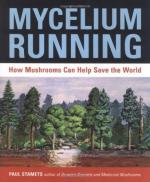|
This section contains 398 words (approx. 2 pages at 300 words per page) |
Mycelium (plural, mycelia) is an extension of the hyphae of fungi. A hyphae is a thread-like, branching structure formed by fungi. As the hyphae grows, it becomes longer and branches off, forming a mycelium network visually reminiscent of the branches of tree.
The mycelium is the most important and permanent part of a fungus. The mycelia network that emanates from a fungal spore can extend over and into the soil in search of nutrients. The ends of some mycelia terminate as mushrooms and toadstools.
Mycelium have been recognized as fungal structures for a long time. The author Beatrix Potter provided accurate sketches of mycelium over 100 years ago. At the time her observations were considered irrelevant and the significance of mycelium was lost until some years after her work.
The growth of mycelia can be extensive. A form of honey fungus found in the forests of Michigan, which began from a single spore and grows mainly underground, now is estimated to cover 40 acres. The mycelia network is thought to be over 100 tons in weight and is at least 1,500 years old. More recently, another species of fungus discovered in Washington State was found to cover at least 1,500 acres
The initial hyphae produced by a fungus has only one copy of each of its chromosomes. Thus, it is haploid. The resulting mycelium will also be haploid. When one haploid mycelium meets another haploid mycelium of the same species, the two mycelia can fuse. The fused cells then contain two nuclei. In contrast to plants and animals, where the nuclei would fuse, forming a functional nucleus containing two copies of each chromosome (a diploid state), the two nuclei in the fugal cell remain autonomous and function separate from one another.
Fusion of the nuclei does occur as a prelude to spore formation. Several duplications and shuffling of the genetic material produces four spores, each with a unique genetic identity.
At any one time, part of a mycelia network may be actively growing while another region may be dormant, awaiting more suitable conditions for growth. Mycelium is able to seek out such suitable conditions by moving towards a particular food source, such as a root. Also mycelium can change their texture, for example from a fluffy state to a thin compressed state or to thicker cord-like growths. All these attributes enable the mycelium to ensure the continued growth of the fungus.
|
This section contains 398 words (approx. 2 pages at 300 words per page) |


